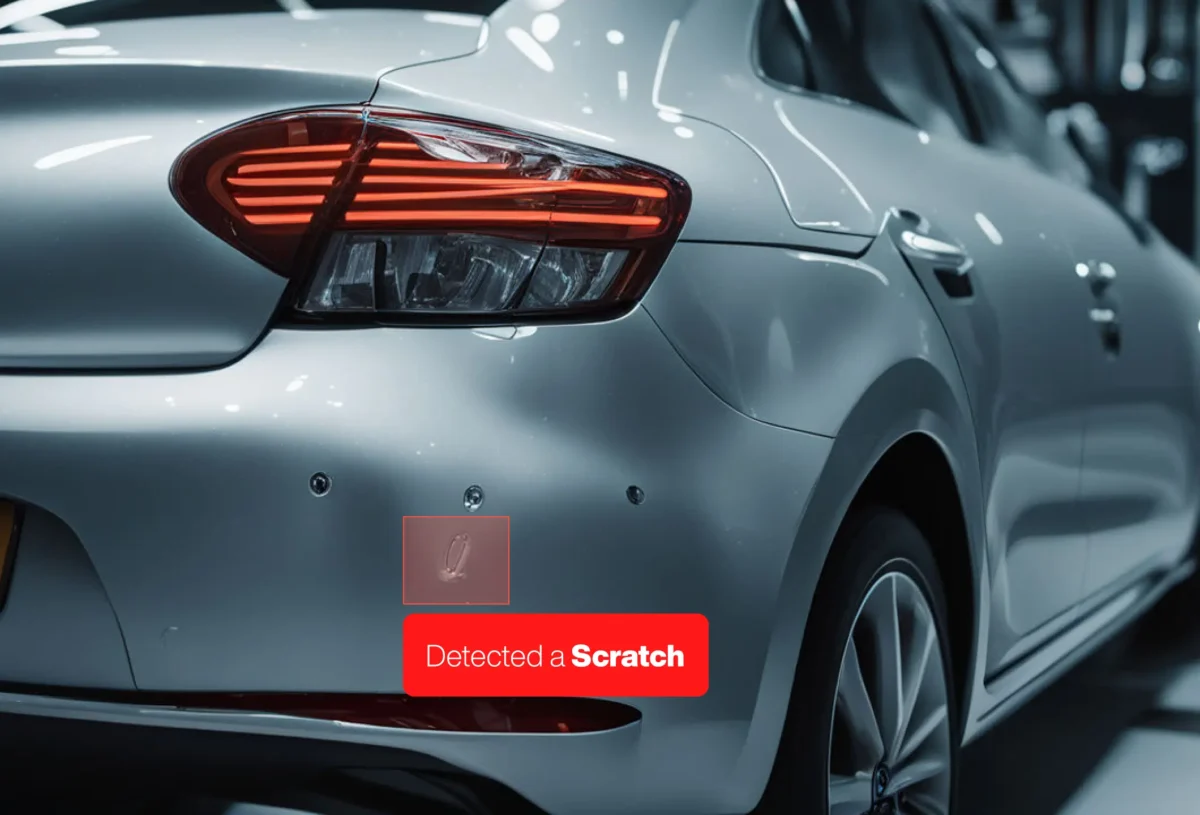In today’s fast-paced manufacturing environment, quality control is paramount. Ensuring that products, especially in the automotive industry, meet high standards requires cutting-edge technology. Our recent project focused on developing an advanced inspection system for scratch detection, leveraging state-of-the-art machine learning models and computer vision techniques. This blog delves into the technical details of our project, covering data collection, preprocessing, model training, deployment, and real-time inference.
Project Overview
The goal of our project was to create an inspection system capable of detecting scratches on automobile surfaces. We aimed for a system that not only identifies the presence of these defects but also precisely segments the affected regions. To achieve this, we utilized the YOLOv8x-seg model, a top-tier model in object detection and segmentation, developed using the Ultralytics framework.
Data Collection and Preprocessing
The foundation of any successful machine learning project is a robust dataset. We collected a comprehensive dataset comprising images of automobile surfaces, annotated with scratch locations. The data collection process involved:
- Image Acquisition: High-resolution images were captured using an IP bullet camera setup in a controlled environment.
- Annotation: Each image was meticulously annotated to mark the bounding boxes and segment the areas affected by scratches.
Data Augmentation
To enhance the robustness of our model, we applied several data augmentation techniques. These included:
- Random Cropping: To simulate different viewpoints and scales.
- Rotation and Flipping: To make the model invariant to orientation changes.
- Color Jittering: To account for varying lighting conditions.
- Noise Addition: To simulate different types of camera noise and imperfections.
Data Preprocessing
Data preprocessing involved several steps to prepare the images for model training:
- Normalization: Scaling pixel values to a range suitable for the model.
- Resizing: Adjusting image dimensions to fit the input size required by YOLOv8x-seg.
- Label Encoding: Converting annotations into a format compatible with the training framework.
Model Training
We chose the YOLOv8x-seg model due to its superior performance in both object detection and segmentation tasks. This model was trained using the Ultralytics framework, which provides a user-friendly interface and powerful tools for model development. Our training setup included:
- Hardware: NVIDIA RTX 4090 GPU for accelerated training, supported by an Intel i7 processor.
- Framework: Ultralytics for model implementation, leveraging CUDA for GPU acceleration.
- Hyperparameters: Carefully tuned parameters like learning rate, batch size, and epochs to optimize model performance.
Training Techniques
To ensure the model’s robustness and accuracy, we implemented various computer vision and deep learning techniques available in the Ultralytics framework:
- Transfer Learning: Starting with a pre-trained YOLOv8x-seg model and fine-tuning it on our dataset.
- Multi-Scale Training: Training the model on images of varying scales to improve its ability to detect objects at different sizes.
- Loss Function Optimization: Using advanced loss functions to enhance the model’s capability to segment defects accurately.
Model Evaluation
Evaluating the model involved several metrics to ensure high accuracy and robustness:
- Precision and Recall: Measuring the model’s ability to correctly identify defects without false positives.
- IoU (Intersection over Union): Assessing the overlap between the predicted bounding boxes and the ground truth.
- Segmentation Accuracy: Evaluating the accuracy of the segmented regions within the bounding boxes.
Our model achieved outstanding performance, with high precision, recall, and IoU scores, demonstrating its reliability in detecting and segmenting scratches.
Real-Time Inference and Deployment
The trained model was deployed on an on-premises server, connected to an IP bullet camera. This setup allows for real-time inspection of automobiles, with the system capable of:
- Real-Time Detection: Continuously monitoring the production line and identifying defects as they appear.
- High Accuracy: Providing reliable detection and segmentation results, ensuring quality control.
- Robust Performance: Operating effectively under various lighting and environmental conditions.
Conclusion
Our scratch detection system showcases the power of combining state-of-the-art deep learning models with robust data collection and preprocessing techniques. The use of YOLOv8x-seg and the Ultralytics framework enabled us to develop a high-performing, real-time inspection system that meets the stringent demands of the automotive industry. With its deployment, manufacturers can ensure higher quality standards and reduce the risk of defective products reaching customers.


